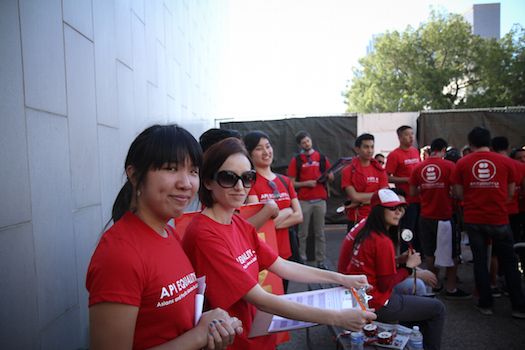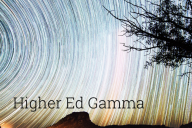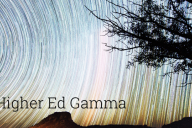You have /5 articles left.
Sign up for a free account or log in.

Students "in the field" as part of the author's course; they were participating in a Lunar Day parade for API Equality-LA, an advocacy group in the Greater Los Angeles area for the Asian and Pacific Islander (API) community for the fair treatment of lesbian, gay, bisexual, and transgender people and marriage equality.
Small grassroots community organizations that organize low income communities of color pose a singular set of challenges for community-engaged partnerships. Working with these scrappy under-resourced groups, I am reminded of something Dolores Huerta, co-founder with Cesar Chavez of the United Farm Workers, once shared about their early days of organizing. They were warned, “The farm workers are too poor and illiterate. They will be impossible to organize.”
Nearly 10 years ago I was asked to co-develop a graduate course in community-engaged research at University of Southern California’s Annenberg School for Communication and Journalism. We decided to use the opportunity to pilot short-term research partnerships between grassroots community organizations and student research teams.[1] Year by year, we assessed and adjusted the way the partnerships were managed and we now have a model that might be replicated by other urban universities.
The scale of the course is intentionally small. We focus on developing partnerships that serve as an “on ramp” to research for community organizations that often have no formal experience with academic research.[2] The challenges to developing these partnerships are plentiful. If you are not part of the neighborhood, grassroots organizations are not always easy to identify. Given the tense history of community-university relations, trust can be difficult to establish. The language of “research questions,” “data,” and “instruments” can be intimidating to staff and organization members for whom college was out of reach. Because these organizations operate on miniscule budgets with minimal staff, returning calls and emails sometimes fall to the bottom of the “priority pile.” Given all these barriers, investing the time to build new relationships and take on new projects with uncertain benefits and unfamiliar partners requires a significant leap of faith.
And yet, for urban universities frequently adjacent to low income communities of color, these grassroots groups are among our closest neighbors. Within these neighborhoods, grassroots organizations are fighting David & Goliath battles for better housing, better wages, better schools. In Los Angeles, my home for the last 25 years, these grassroots community organizations have powered profound social change, transforming policies and practice at the state and local level in defiance of the political paralysis that frequently affects Washington D.C.
I learned all of this in the first few months of my job as communications director at Liberty Hill, a community foundation in Los Angeles. I also discovered that grassroots community organizations were hard pressed to position themselves as experts to policymakers and the press because they did not have the data they needed to persuasively make their case. These leaders knew their issues – be it workplace wage and safety, slum housing, or environmental toxics – better than most so-called experts, but community expertise went unrecognized because it was not standardized, packaged or publicized in ways typical of academic findings. These organizations wanted research, but most of the time they didn’t know where to start. Ironically, many of them were doing research as part of their organizing, but they would never have called it research because it wasn’t cloaked in fancy language, degrees or social prestige.
This tangle of unmet needs and manifest potential were the reasons why I jumped at the chance to co-develop a course that would – as I first imagined it – deploy a small army of graduate student researchers to support community organizations that were rich in expertise but financially threadbare. Sandra Ball-Rokeach, a sociologist and longtime professor at USC’s Annenberg School for Communication and Journalism was my collaborator. Dr. Ball-Rokeach had spent the previous 15 years looking for ways to conduct research that would have a greater impact on neighborhoods and communities. In 1992, L.A.’s civil unrest had stimulated a crisis of confidence for her. From her comfortable patio overlooking a vista of Los Angeles that included the low income neighborhoods surrounding USC that were at that moment engulfed in flames, she questioned the impact of her prior work. The course we developed, Research, Practice and Social Change, was one way to try to better serve those communities that remain beset by all the problems that come with poverty.
The course concept was simple. Graduate student teams would partner with grassroots community organizations that wanted short-term research. We deliberately prioritized small local grassroots community groups working in communities of color, organizations whose infrastructure was likely to be less than robust, were likely to have little or no experience with research, and that would challenge students to address differences of race and class. We chose not to work with professional advocacy organizations and social service agencies that would make “easy” partners and could conceivably tap foundation resources to cover the costs of research. We leaned heavily on the pioneering and thoughtful work of Phil Nyden, Professor & Director for Center of Urban Research & Learning (CURL) at Loyola University Chicago and Randy Stoecker, Professor of Community & Environmental Sociology at the University of Wisconsin-Madison.
We were also very mindful to avoid the typical university-based “service learning” projects that provide learning opportunities for students, but little or no benefit to the cooperating nonprofit. As a director at the community foundation, I had reached a point where I automatically rejected offers of student volunteer help since I’d never encountered an instance in which the benefits even remotely outweighed the costs of supervision.
Meeting the first night made it immediately clear that students for this course were likely to be disproportionately African American, Latino, Asian and/or female. Almost to a one, the students were near-desperate to find ways that their academic work could serve their communities or other communities facing injustice.[3] The strength of that desire propelled them to enroll in a course that would force them out of their campus comfort zones and to deal with real world problems for which there were often no textbook answers. The students who enrolled had real guts.
After the first semester, we realized that some grassroots organizations made more suitable partners than others. Our list of “never again” organizations came to include community organizations looking for research to support an active advocacy campaign. The dynamics of these campaigns shifted so dramatically and so quickly that they made for excessively turbulent partnerships. (Overnight, for example, a city planning decision or unexpected move by the campaign’s opposition could send the research in an entirely different direction.) We also learned that many prospective partners were chiefly motivated by a desire to secure self-justifying evaluations with an academic imprimatur that would help them attract institutional funding, so we began to rule out founder-led, staff-of-one nonprofits looking for program evaluation. We wanted partners that were ready to embrace research with integrity and sustain a single research focus over the 14 weeks of the semester.
Our difficulty vetting organizations and projects was resolved once-and-for-all by partnering with Liberty Hill, the community foundation where I worked. By inviting proposals only from Liberty Hill grantees we could be assured that the community organizations were sufficiently well-established that they could take on the additional work involved in collaborative research and were likely to be able to put the research findings into practice when it was completed.
Early in the process, we also learned some counterintuitive lessons about matchmaking students and community organizations. We came to encourage students to be issue-agnostic. That is, students with an interest or expertise in the environment might end up working with a group on affordable housing. Students with an interest in youth and education might work on LGBT research. The value of the experience for students proved less dependent on their areas of existing expertise, and more on the process – their ability to ask questions, listen, help organizations assess the availability of relevant data, imagine potential findings and how they might be applied, and manage a relationship that at the outset often feels like an arranged marriage. (Virtually every class session includes time devoted to troubleshooting partnerships and guiding students in establishing a trusting relationship based on respectful, honest and supportive communication.)
Fourteen weeks is a crazy-short amount of time to conduct research. Nonetheless, the results of the research projects have been significant. Their impact on the organizations and their programs or advocacy are often not immediately obvious, but by maintaining contact with community partners over time, we have been able to track the long-term value of the research.
For instance, we partnered with a small South L.A. community organization that helps under- and unemployed Black men get work through job training programs and job development. When they first proposed a research project to us, the organization had recently won a Project Labor Agreement (PLA) that guaranteed local minority hiring on a multi-billion dollar construction project from the L.A. County transportation agency. It was a huge victory for the organization, but one problem remained unsolved. The County had no staff to insure that the terms of the PLA were enforced, and County representatives made clear that it was up to the community organization to figure out how to enforce compliance.
A research team of three graduate students met weekly with the community partner, developed a “report card” instrument with criteria for evaluating prospective contractors on local minority outreach, and trained organization staff and members to gather the data and produce the report card. A year after the research began, the County transportation agency hired the contractor recommended by the community partner. The agency was also so impressed by the work of the community partner that they asked the organization to join the County implementation team. Since then, a second graduate research team has worked with the same South L.A. group to develop another instrument to determine whether County contractors covered by the PLA are meeting their contractual obligations. The data gathered has helped local elected officials hold the contractors accountable.
In a second partnership, we collaborated with an Asian LGBT community organization that wanted to better understand the experience and family dynamics of Asian-Americans coming out. The research team conducted a series of interviews with openly-LGBT Chinese-Americans. The insights from those interviews were incorporated into the community partner’s “coming out workshops” which help support people facing the conflict and hostility that often accompanies coming out. The community partner also used the initial research to secure grant funding to expand the study to other Asian LGBT populations.
Over the years, we’ve distilled seven additional “lessons learned” about why this model succeeds in providing both a rich learning experience for students[4] and actionable research for the community partners.
- It’s an axiom within community-engaged research, but still worth repeating: We begin with the community organization’s research questions, not questions that come out of the academic literature. We want to help organizations learn what they think they need to learn. The process starts by asking, “What do you [the community organization] want to know and why do you think it will be helpful to your work?”
- The support of a community foundation like Liberty Hill in identifying strong organizations and assessing their readiness is indispensable. The foundation’s involvement not only provides us with a shortlist of prospective partners, its reputation helps to overcome initial distrust of USC.
- The research projects are right-sized. The course is scaled as an initial on-ramp for deeper investment in research. As the two examples I’ve shared illustrate, it’s not atypical to see community organizations put a “toe in the water” and then, after the initial partnership, begin to more systematically integrate research into their work.
- We don’t make the perfect the enemy of the good. In other words, we sacrifice rigorous research design when necessary. Should the interviews for the Asian LGBT organization have been conducted either all in-person or all via Skype? Absolutely. But it wasn’t possible and we didn’t sweat it. Should the focus groups have taken place somewhere other than the community partner’s office? Yes, ideally. But bullet-proof research design is sometimes impractical.
- We don’t produce white papers. Graduate student research teams place a great deal of attention on how to best report out findings so they will be actionable. The end-product is never a white paper. It’s more likely to be a survey instrument plus staff training, or a focus group summary plus recommendations for implementation. The form of the final product is discussed with community organizations and reviewed in draft form before being finalized so the organization will be able to implement the tools, findings, etc. after the research team has left.
- The Research, Practice and Social Change model is low cost, making it sustainable even under tight budget constraints. The modest resources involved also sidestep frictions that often arise in university-community research partnerships that involve big money from foundations or government and avoid the type of well-meaning but misguided influence over research sometimes exercised by funders.
- Research, Practice and Social Change taps graduate student talent and dedication to social justice. The model is not dependent on the involvement of big name tenured faculty who already have their own research interests and ways of approaching them. Nor are we recruiting junior faculty desperately pursuing tenure. Instead the model trains a new generation of academic researchers who will be far more savvy about working with community organizations as they build their own university careers. Our hope is that as these young scholars develop their own research and courses they will contribute to a paradigm shift in how universities approach research in community.
In the last 10 years, I see small advances that make me hopeful that community-engaged research at American universities is gaining strength. Unlike a decade ago, students with community-engaged research experience prominently featured on their C.V.s appear to be at a competitive advantage on the job market – at least at certain types of academic institutions. In 2012, MIT’s CoLab launched URBAN, a national network of “multi-disciplinary scholars and practitioners committed to the use of community-based research for collaborative generation and testing of knowledge.” Last year, a local group of L.A. researchers – some at local universities, others housed at community organizations or independent research groups, and community allies – began to meet quarterly to share work, discuss upcoming campaigns and simply get to know each other. USC’s Program on Environmental and Regional Equity (PERE) issued a report in 2014 called A Foot In Both Worlds: Institutionalizing Progressive Community-Engaged Research Centers Within Universities, based on interviews with 20 community-engaged research centers. Their shortlist of 20 was culled from an original list twice that size.
All of this makes me cautiously optimistic. Dr. King wrote, “Faith is taking the first step even when you don’t see the whole staircase.” In the academy, faith and research don’t often appear in the same sentence, but faith is a critical tenet of Research, Practice and Social Change. I’m using the word “faith” not in a God sense, but in the sense that we encourage students to move forward through the often opaque and challenging conditions of building a supportive, trusting relationship and to complete the research without rock-solid confidence that it will have any meaning for the organization, its programs or campaigns. We urge them to have faith that their contribution is an essential piece, although just one piece, of the work of social change and that, over time, and in combination with the community partner’s organizing and advocacy, change will come.
Barbara Osborn, Ph.D., is a member of the Adjunct Faculty at The Annenberg School for Communication and Journalism at University of Southern California. She has also taught at Cal State Northridge and Glendale Community College. For nearly 15 years, she was the Strategic Communications Director at Liberty Hill, a Los-Angeles based social justice foundation. She is currently an organizational and communications strategist for social justice executives.
[1] Throughout this post, I use community-engaged research as an umbrella term to include what is also referred to as action research, participatory action research, or community-based participatory research because, although there are differences between them, their aims are allied.
[2] Often campus-based centers for community-engaged research conduct research on a relatively large scale. USC’s Program for Environmental and Regional Equity (PERE) and City University of New York’s Public Science Project, for instance, take on big, sometimes multi-year foundation-funded research projects.
[3] As word about the course spread, we began to attract graduate students with social justice leanings from USC’s policy, education and social work schools as well.
[4] The experience is sufficiently valuable for students that of every four or five projects taken on by the course, one or two student teams choose to continue to work with the community partner beyond the duration of the semester.



